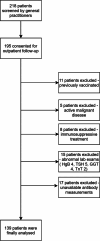Mitochondrial dysfunction in long COVID: mechanisms, consequences, and potential therapeutic approaches
- PMID: 38668888
- PMCID: PMC11336094
- DOI: 10.1007/s11357-024-01165-5
Mitochondrial dysfunction in long COVID: mechanisms, consequences, and potential therapeutic approaches
Abstract
The COVID-19 pandemic, caused by the SARS-CoV-2 virus, has introduced the medical community to the phenomenon of long COVID, a condition characterized by persistent symptoms following the resolution of the acute phase of infection. Among the myriad of symptoms reported by long COVID sufferers, chronic fatigue, cognitive disturbances, and exercise intolerance are predominant, suggesting systemic alterations beyond the initial viral pathology. Emerging evidence has pointed to mitochondrial dysfunction as a potential underpinning mechanism contributing to the persistence and diversity of long COVID symptoms. This review aims to synthesize current findings related to mitochondrial dysfunction in long COVID, exploring its implications for cellular energy deficits, oxidative stress, immune dysregulation, metabolic disturbances, and endothelial dysfunction. Through a comprehensive analysis of the literature, we highlight the significance of mitochondrial health in the pathophysiology of long COVID, drawing parallels with similar clinical syndromes linked to post-infectious states in other diseases where mitochondrial impairment has been implicated. We discuss potential therapeutic strategies targeting mitochondrial function, including pharmacological interventions, lifestyle modifications, exercise, and dietary approaches, and emphasize the need for further research and collaborative efforts to advance our understanding and management of long COVID. This review underscores the critical role of mitochondrial dysfunction in long COVID and calls for a multidisciplinary approach to address the gaps in our knowledge and treatment options for those affected by this condition.
Keywords: Chronic fatigue; Long COVID; Metabolic disturbances; Mitochondrial dysfunction; Oxidative stress; Post-infectious syndromes; Therapeutic strategies.
© 2024. The Author(s).
Conflict of interest statement
The authors declare no competing interests.
Figures



References
-
- Chilunga FP, Appelman B, van Vugt M, Kalverda K, Smeele P, van Es J, Wiersinga WJ, Rostila M, Prins M, Stronks K, et al. Differences in incidence, nature of symptoms, and duration of long COVID among hospitalised migrant and non-migrant patients in the Netherlands: a retrospective cohort study. Lancet Reg Health Eur. 2023;29:100630. 10.1016/j.lanepe.2023.100630. 10.1016/j.lanepe.2023.100630 - DOI - PMC - PubMed
-
- Qi C, Osborne T, Bailey R, Cooper A, Hollinghurst JP, Akbari A, Crowder R, Peters H, Law RJ, Lewis R, et al. Impact of COVID-19 pandemic on incidence of long-term conditions in Wales: a population data linkage study using primary and secondary care health records. Br J Gen Pract. 2023;73:e332–9. 10.3399/BJGP.2022.0353. 10.3399/BJGP.2022.0353 - DOI - PMC - PubMed
-
- Frallonardo L, Segala FV, Chhaganlal KD, Yelshazly M, Novara R, Cotugno S, Guido G, Papagni R, Colpani A, De Vito A, et al. Incidence and burden of long COVID in Africa: a systematic review and meta-analysis. Sci Rep. 2023;13:21482. 10.1038/s41598-023-48258-3. 10.1038/s41598-023-48258-3 - DOI - PMC - PubMed
-
- Beretta S, Cristillo V, Camera G, Morotti Colleoni C, Pellitteri G, Viti B, Bianchi E, Gipponi S, Grimoldi M, Valente M, et al. Incidence and long-term functional outcome of neurologic disorders in hospitalized patients with COVID-19 infected with pre-omicron variants. Neurology. 2023;101:e892–903. 10.1212/WNL.0000000000207534. 10.1212/WNL.0000000000207534 - DOI - PMC - PubMed
Publication types
MeSH terms
LinkOut - more resources
Full Text Sources
Medical
Miscellaneous

